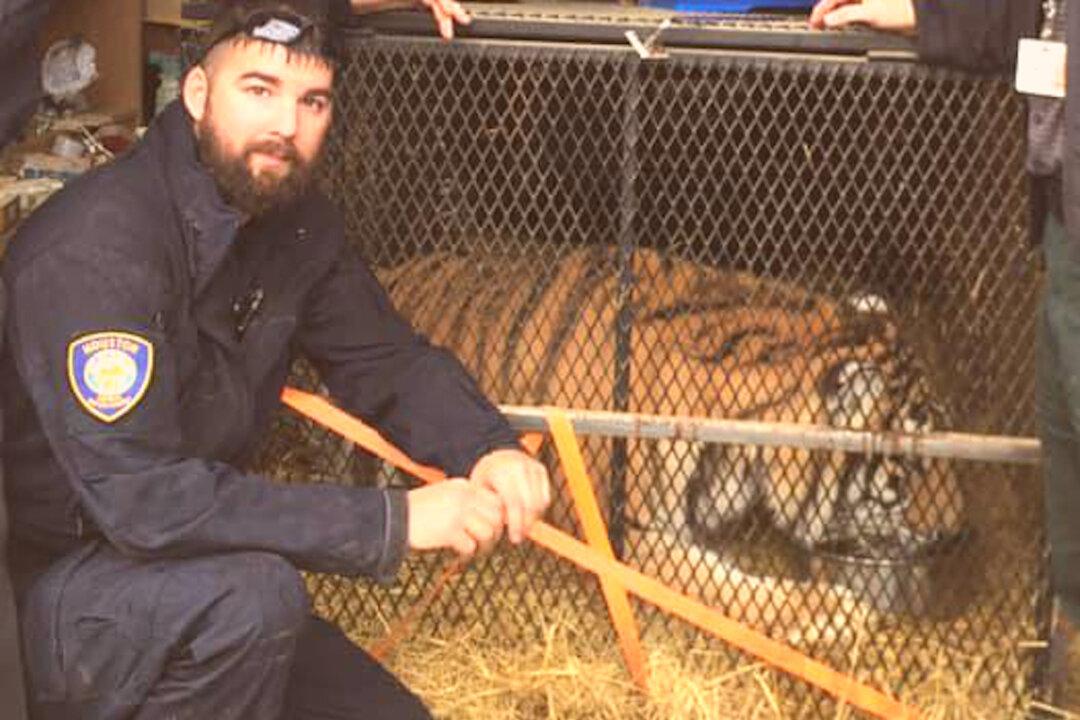An anonymous tipster first thought it was a hallucination when they stumbled across an overweight tiger in the abandoned Houston house garage where they had gone to smoke marijuana.
When authorities went to investigate, the 350-pound tiger was all too real, trapped inside a “rinky-dink” cage in the unlocked garage, police said.





